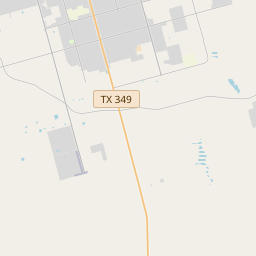Site of Old Midland Army Flying School
Historical marker location:






Old Sloan Field, built 1931, in 1942 became Midland Army Flying School, for bombardier cadets. At one time it was called largest bombardier training center in the world. One of over 25 World War II airfields in Texas, its cadets flew 861,510 hours in Beech "AT-11" aircraft, dropping 1,245,107 bombs. Last class of cadets graduated in Jan. 1945.
The field was used as an Army Air Forces instructor school (bombardier) until World War II ended later that year. After military phase-out, 1947, commercial field opened 1950
As one of the most visible programs of the Texas Historical Commission (THC), historical markers commemorate diverse topics in Texas history, including: the history and architecture of houses, commercial and public buildings, religious congregations, and military sites; events that changed the course of local and state history; and individuals who have made lasting contributions to the state, community organizations, and businesses.
The discovery of oil in 1901 near Beaumont, Texas, sparked an oil boom that transformed the state's economy and led to the rise of the modern petroleum industry.
The first recorded European exploration in Midland County occurred in the mid-19th century when U.S. Army surveyors visited the area. In the late 1800s, settlers began establishing small ranching communities in the region. However, the true transformation of Midland County came in the early 1900s with the discovery of oil.
Following the discovery of oil, Midland County experienced a significant boom. The oil industry attracted thousands of people seeking fortune and opportunities. Midland became a major hub for oil production and attracted major oil companies. The boom brought rapid growth and development to the region, with infrastructure such as roads, housing, and businesses being built to accommodate the increasing population.
In recent decades, Midland County has continued to thrive as a center for the oil and gas industry. Its favorable geological formations and rich oil reserves have made it one of the largest oil-producing regions in the United States. Alongside the oil industry, Midland has diversified its economy with sectors such as agriculture, manufacturing, and healthcare. Today, Midland County is known for its vibrant economy, bustling downtown, and strong sense of community. The county's history of resilience and adaptability has shaped it into a thriving region with a promising future.
Midland County Timeline
This timeline provides a condensed summary of the historical journey of Midland County, Texas.
- 1885 - Midland County is officially organized.
- 1886 - The first post office in Midland County is established.
- 1890 - The population of Midland County is recorded as 418.
- 1905 - The Moody family discovers oil near Midland, sparking the oil boom in the region.
- 1920 - Midland's population reaches 7,500 due to the oil boom.
- 1927 - The city of Midland is incorporated.
- 1942 - Midland Army Air Field is established as a military training base during World War II.
- 1951 - Midland College is founded.
- 1952 - The Permian Basin Petroleum Museum is established in Midland.
- 1990 - The population of Midland County reaches over 90,000.
- 2012 - The George W. Bush Childhood Home is opened as a museum in Midland.